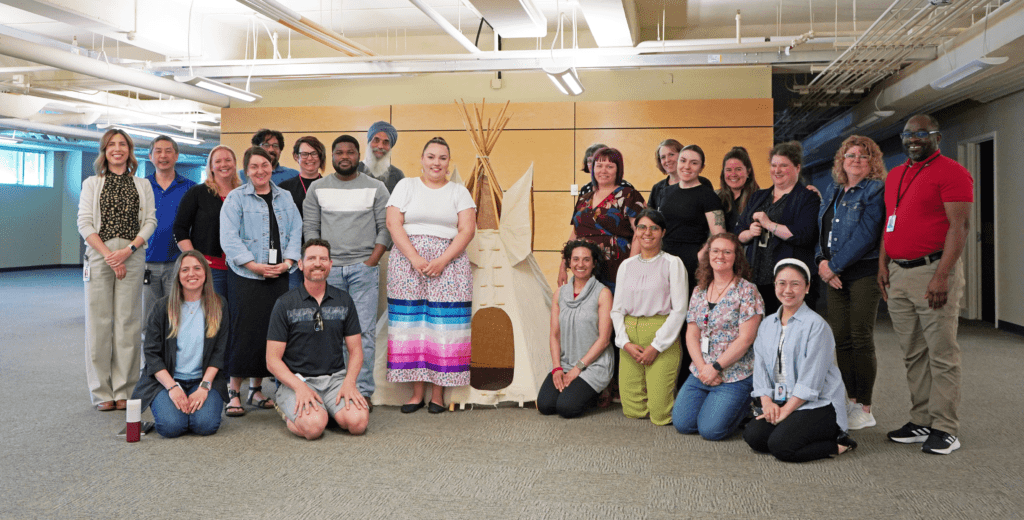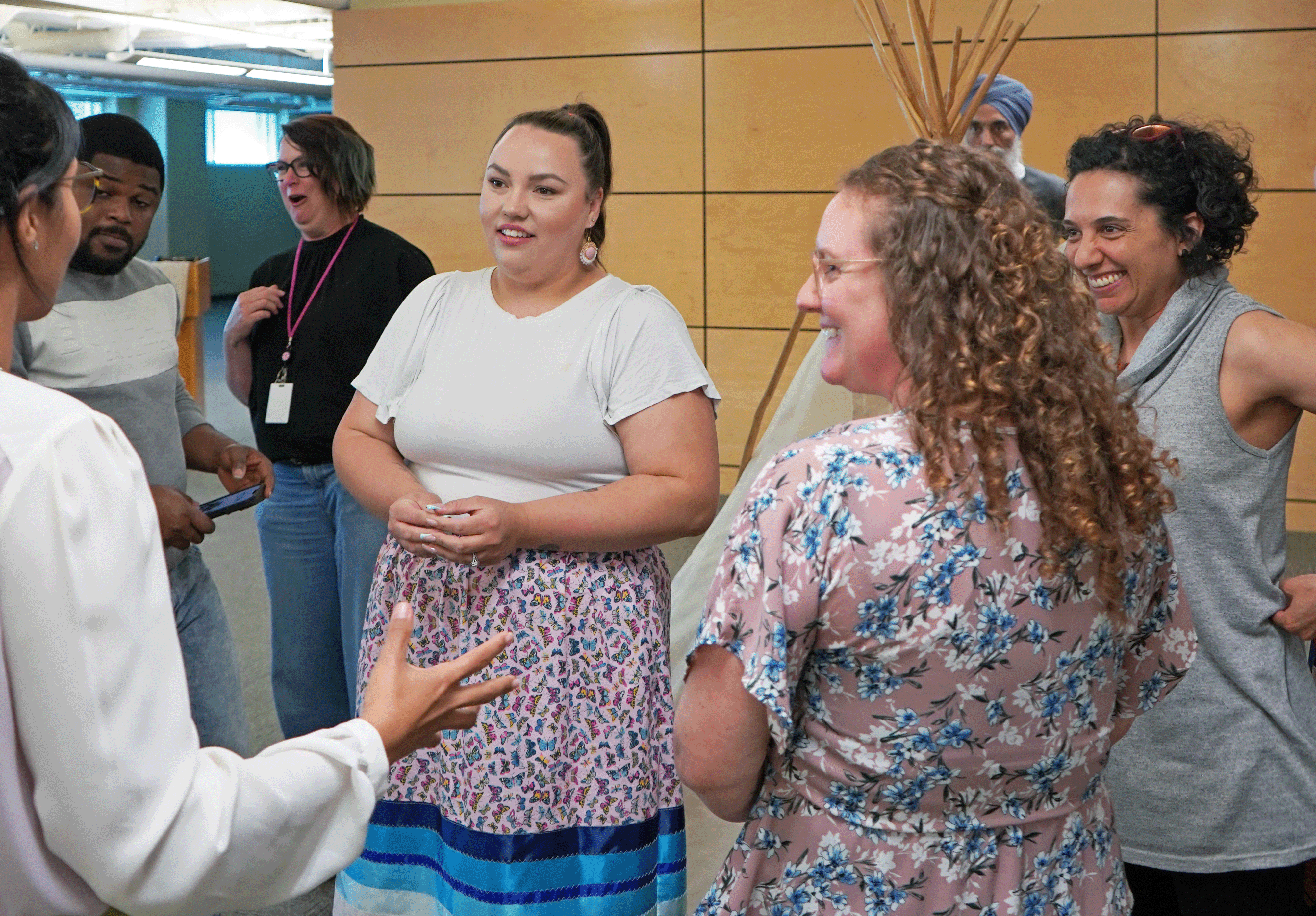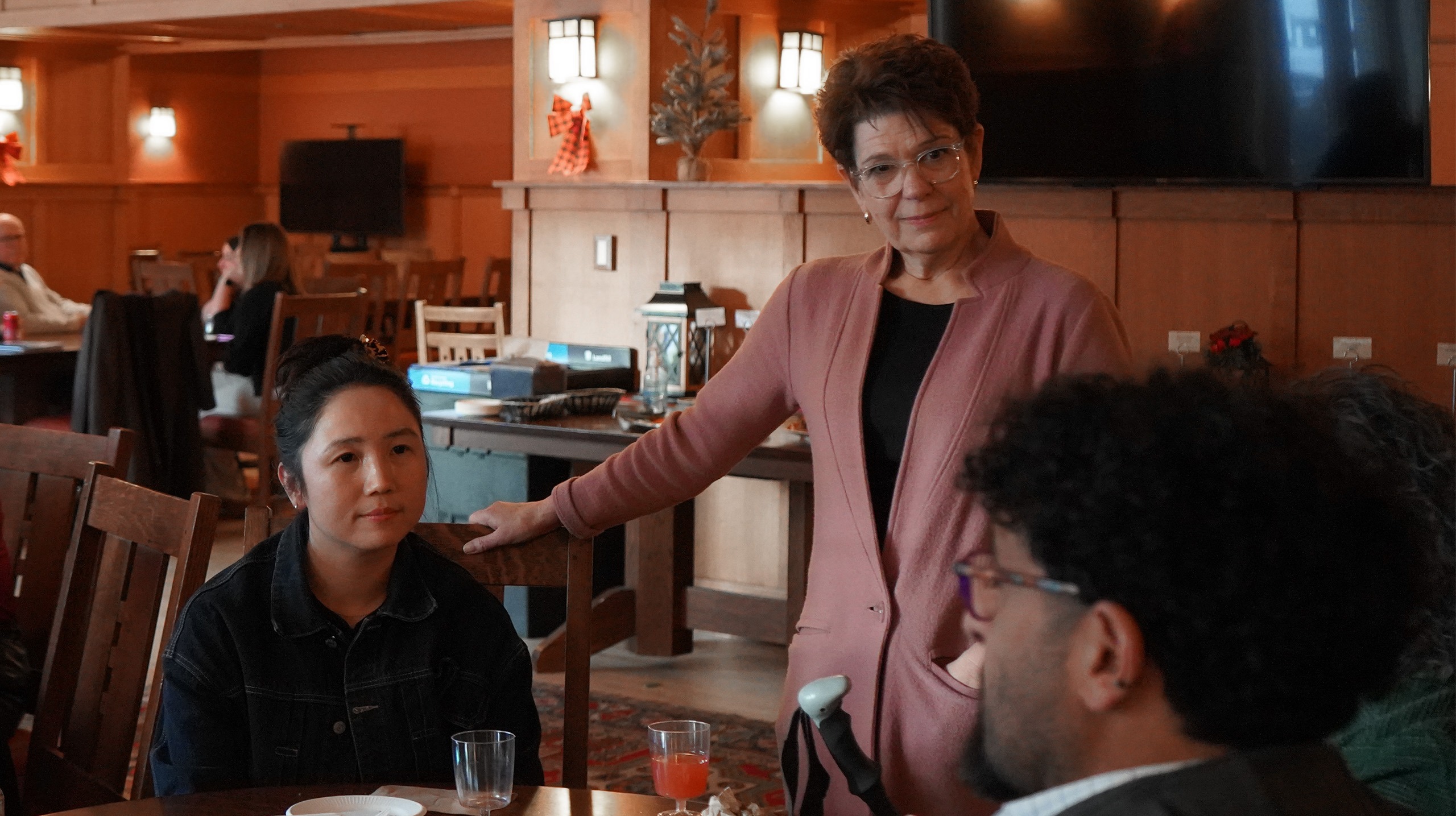In North America, one of the most recognizable symbols of Indigenous culture is what the Cree call a Mikiwap, commonly known as a teepee.
Traditionally, women are the owners of the Mikiwap and are responsible for its assembly, disassembly, and upkeep – teachings passed down from generation to generation, century to century.
However, the Mikiwap is more than just a symbol of Indigenous regalia – it’s a culturally significant act rooted in ceremony, it’s construction an opportunity to teach the foundational values of life: respect, obedience, and humility. Balanced together, they provide the foundational base for life.
In celebration of National Indigenous History Month, we invited educator Jasmyn Albert to our office in Saskatoon to share her teaching on the Mikiwap. She guided us through the set-up of a teepee while sharing the significance of this ceremony.
Jasmyn is of Plains Cree, Métis, and settler decent. She is passionate about sharing her culture and the Nehiyaw world view, fostering kinship and community in a good way.
A mother, an artist, and an educator, Jasmyn holds a Bachelor of Education from the Indian Teacher Education Program at the University of Saskatchewan and works as a session host and facilitator for Connected North, bringing education to northern and isolated communities.
In her spare time, she shares the teachings of her culture, including the sacred understanding of the Mikiwap, connecting the teachings to many areas of life. Following her visit to HQC, she spoke with us about why sharing her culture’s teachings is so important.

Q: Tell us about the significance of the Mikiwap in Indigenous culture.
Jasmyn: It starts here, our home. Our teachings are what we want in our home, guiding you in living in a good way with one another. When we share our culture, you’re supposed to focus on your home first.
Many of our teachings stem from the teepee – we use it as a tool to talk about values. There is a teaching for every pole. The canvas signifies ultimate protection, holding all of the teachings within the home. It encourages us to live in balance with Mother Nature, respecting the wind and the natural elements. In balance with all of creation, your home remains standing, your family safe.
These teaching always existed. The tradition is passed down through women, and we continue to carry it with us.
Q: What is meaningful to you about sharing the teachings passed down from your kokum?
Jasmyn: It’s an honour. It’s honour to be part of someone’s reconnection to their culture. I’m thankful that I have the opportunity to share. I share with anyone who hopes to listen.
I started teaching when I was 16 years old, as an Indigenous art teacher teaching traditional beading at First Nations University.
These teachings are to be shared because this is how our culture lives on. It was illegal for us to share our culture and talk about the teepee, so now we’ve seen a resurgence of sharing. We can be proud to be Indigenous. Let the whole world know how beautiful our culture is.
Q: How are you celebrating National Indigenous History Month?
Jasmyn: I love that we have this month, but it should be everyday that we acknowledge the beauty of Indigenous people, the strength of Indigenous people, the sacredness, and the harm that has been caused to Indigenous people and continues to harm Indigenous people.
This month, I do a lot of sharing, but it’s really no different than any other month to me. I celebrate my culture every day, not just this month.
Q: For those wanting to commemorate National Indigenous History Month, how would you recommend they get involved?
Jasmyn: Whatever you decide, do so with an open mind, humility, and respect. Indigenous people don’t owe you anything; they don’t have to share. Go about your learning without expectations, open to whatever it is you do learn.
Learning is a lifetime commitment. Indigenous people are still learning their culture. I’m still in the early stage of learning. You’re never done.
Our reconciliation journey
To be authentic and grounded in the true meaning of reconciliation, we recognize the need to work in new ways that conscientiously support and promote cultural humility, safety, and responsiveness.
In the spirit of “Nothing about us without us,” we are committed to listening, learning, and engaging with traditional Knowledge Keepers, Elders, and cultural advisors to help fulfill our vision of optimal health and health care for everyone in Saskatchewan.
As part of our commitment to truth, healing, and reconciliation, we recently launched our 2024-25 Reconciliation Action Plan, outlining the actions we are taking to address the Truth and Reconciliation Commission Calls to Action within our mandate.
This is a life-long commitment – a journey of learning we have embarked on for generations to come. Each year, we report on our progress and identify new actions to continue towards reconciliation.
To learn more about Jasmyn Albert and the teachings she offers, please visit her Instagram account or email her at jasmyn.albert@live.com.



